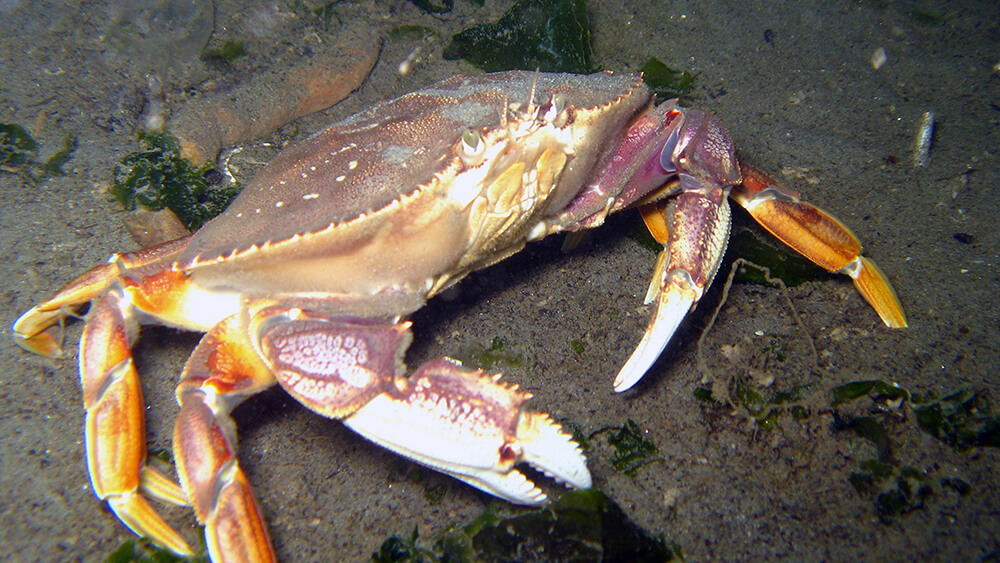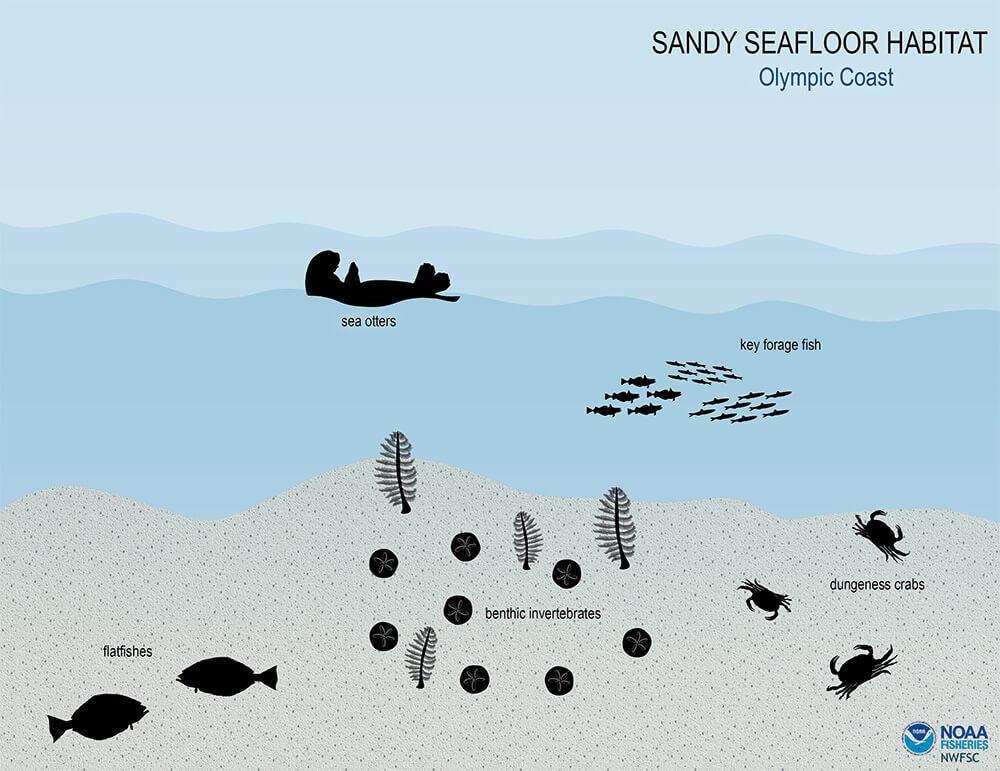Sandy Seafloor

Sandy seafloor habitats extend seaward from the shore, encompassing areas of the continental shelf in waters less than 30m (~100 ft) deep. These areas of the seafloor, which are dominated by sand, mud, and silt, tend to shift over time, favoring organisms that burrow and scurry or can tolerate changes in the substrate. Surf perch, forage fish, and Dungeness crab frequently utilize sandy seafloor areas. Washington’s sea otters are known to forage within this habitat, in addition to the kelp forests with which they are often associated.
Click on the illustration below to access user-friendly, online tools that allow resource managers, scientists, educators, students, and the public to explore, discover, and summarize ecosystem trends at the sanctuary.


